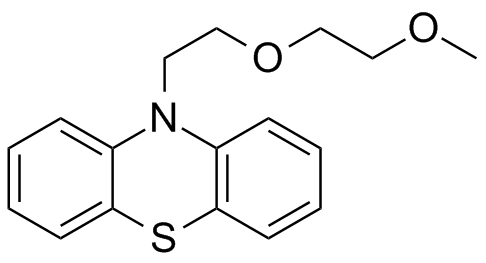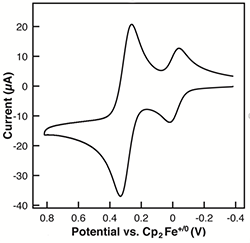Published TCIMAIL newest issue No.197 | New tool "TCI SpectraViewer" | [Product Highlights] o-Nitrobenzyl Photolabile... | Product Document Searching Made Easy by 2D Code!
Maximum quantity allowed is 999
The Odom Research Group at the University of Kentucky

Professor Susan A. Odom
Susan Odom is an assistant professor at the University of Kentucky. As an undergraduate, Prof. Odom’s worked in the laboratory of Prof. Joseph Chappell at the University of Kentucky in the College of Agriculture from 2000-2001, assisting in the growth of modified tobacco cell cultures. Next she participated in an REU at Cornell University with Prof. Geoffrey Coates in the synthesis of chiral zinc-containing catalysts (2001). Working for Prof. John Anthony as an undergraduate researcher at the University of Kentucky (2001-2003) led her to organic materials chemistry. She synthesized dehydroannulene and acene derivatives and fabricated organic LEDs.
After receiving a B.S. degree in chemistry in 2003, Prof. Odom moved to Atlanta, GA, where she received a Ph.D. from Georgia Institute of Technology under the guidance of Prof. Seth Marder and Dr. Stephen Barlow. She synthesized bis- and tris- triarylamine derivatives and studied their radical cations as mixed-valent species. A stint at the University of Oxford as a visiting student in Prof. Harry Anderson’s research group (2005) sparked a few projects on chromophores containing zinc porphyrins with squaraine or perylene diimide acceptor moieties for nonlinear optical studies and photo-induced electron transfer studies.
She joined the chemistry department at the University of Kentucky in 2011 after a position as a postdoctoral researcher at the University of Illinois, Urbana-Champaign where she developed self-healing electronic materials and damage-indicating microcapsules under the guidance of Prof. Jeffrey Moore. She also worked with researchers (Khalil Amine, John Zhang) at Argonne National Laboratory studying capsules and electrolyte additives in lithium-ion batteries. Prof. Odom’s professional interests include research in organic and materials chemistry for energy storage applications.
Research in the Odom group focuses on the design and synthesis of stable electro-active organic compounds for use in applications requiring reversible electron-transfer reactions, which is enabled through increased stability of their oxidized or reduced forms.
Stable electro-active organic compounds have been utilized in a variety of applications in organic electronics, photovoltaics, and catalysis. An area of particular interest is identifying materials with characteristics amenable for use in non-aqueous redox flow batteries (RFBs). Materials for this application must be highly soluble and highly stable in a battery environment and - for practical use – must be scalable and low cost. We have focused the functionalization of heterocyclic fused-ring compounds such as building blocks and have developed stable materials with extensive performance at high concentration cycling experiments in non-aqueous environments.
Learn More About The Odom Research Group
N-[2-(2-methoxyethoxy)ethyl]phenothiazine (“MEEPT”)
Developing Stable Electron Donors
References
1 “A Fast, Inexpensive Method for Predicting Overcharge Performance in Lithium-Ion Batteries,” Odom, S.A.;* Ergun, S.; Poudel, P.P.; Parkin, S.R. Energy and Environmental Sciences, 2014, 7, 760–767. DOI: 10.1039/C3EE42305K
2N-Substituted Phenothiazine Derivatives: How Stability of the Neutral and Radical Cation Forms Affects Overcharge Performance in Lithium-Ion Batteries.” Narayana, K.A.; Casselman, M.D.; Elliott, C.F.; Ergun, S.; Risko, C.;* Odom, S.A.* ChemPhysChem, 2015, 16, 1179–1189. (cover article) DOI: 10.1002/cphc.201402674
3 “The Fate of Phenothiazine-Based Redox Shuttles in Lithium-Ion Batteries.” Casselman, M.D.; Kaur, A.P.; Narayana, K.A.; Elliott, C.F.; Risko, C.;* Odom, S.A.* Physical Chemistry Chemical Physics, 2015, 17, 6905-6912. DOI: 10.1039/C5CP00199D
Technical Applications: Active Materials for Charge Storage in Non-Aqueous Redox Flow Batteries
Grid energy storage has emerged as a critical technology for the increased utilization of intermittent renewable energy sources (i.e. solar, wind), load levelling and arbitrage, and providing back-up power, frequency regulation, and voltage support. While redox flow batteries (RFBs) have been commercialized on large scales, the electrolytes used are highly acidic and corrosive (i.e. sulfuric acid and bromine), and charging potentials are limited due to the electrochemical stability of water. Replacing these electrolytes with non-aqueous organic electrolytes would both alleviate safety concerns and allow for higher charging voltages, the latter of which would reduce battery footprint. Phenothiazine is an easily tunable core, and has been the focus of our flow battery research.4,5
One of the materials developed in the Odom laboratory shows promise as an electron donor, or catholyte, for non-aqueous RFBs. N-[2-(2-methoxyethoxy)ethyl]phenothiazine, or “MEEPT”, is suitable as a one-electron donor.5 This compound is a liquid at room temperature and is miscible with non-aqueous organic solvents and electrolytes. If heated slightly, electrolyte salts become considerately soluble. For example, at 55 ºC, LiTFSI dissolves to about 1 M in MEEPT with no co-solvent. This material has also been isolated as a radical cation salt (BF4- and SbCl6-), both of which are stable enough to grow crystals.

10-[2-(2-Methoxyethoxy)ethyl]-10H-phenothiazine
Cyclic voltammetry of this compound shows a reversible one-electron oxidation. (Note: the second oxidation is not reversible in the electrolytes we evaluated.) Shown below with ferrocene as an internal reference, this compound oxidizes at 0.31 V vs. ferrocenium/ferrocene in acetonitrile containing 0.1 M tetraethylammonium tetrafluoroborate. This oxidation is reversible in a variety of additional non-aqueous electrolytes.

Cyclic voltammogram of a solution of MEEPT (0.31 V) and ferrocene (0 V) at 1 mM in 0.1 M TEABF4 in ACN. Scan rate 100 mV/s. Electrodes: glassy carbon, freshly anodized silver/silver chloride, and platinum.
Symmetric flow cell studies of MEEPT paired with its tetrafluoroborate radical cation salt were performed at MIT (research group of Fikile Brushett, Chemical Engineering). These cycling tests, performed at 0.5 M active material, show extensive stability over time, making MEEPT one of the most promising one-electron donors for non-aqueous RFBs.5

Caption: Constant current cycling of MEEPT in a symmetric flow cell at 100 mA cm-2: (a) capacity vs. potential; (b) charge (red) and discharge capacities (blue), as well as current efficiencies (black), as a function of cycle number. Potential cut-offs imposed during the flow cell experiment were ± 0.45 V. The theoretical capacity (dashed line) is 13.4 Ah L-1 (134 mAh), and the experiment runtime was 80.6 h.
References
4 “A Highly Soluble Organic Catholyte for Non-Aqueous Redox Flow Batteries.” Kaur, A.P.; Holubowitch, N.E.; Ergun, S.; Elliott, C.F.; Odom, S.A.* Energy Technology, 2015, 3, 476–480. (cover article, named a top 10 article of 2015) DOI: 10.1002/ente.201500020
5 “High-Current-Density, Long-Duration Cycling of Soluble Organic Active Species for Non-Aqueous Redox Flow Batteries.” Milshtein, J.D.; Kaur, A.P.; Casselman, M.D.; Kowalski, J.A.; Modekrutti, S.; Zhang, P.; Attanayake, N.H.; Elliott, C.F.; Parkin, S.R.; Risko, C.; Brushett, F.R.; Odom, S.A. Energy and Environmental Science, 2016, 9, 3531-3543. DOI: 10.1039/C6EE02027E

